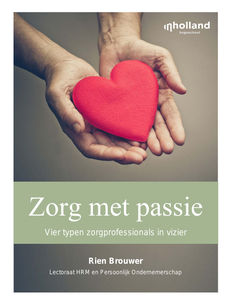In vervolg op onze eerdere publicatie “Werk verandert” (Biemans, Sjoer, Brouwer en Potting, 2017) waarin wij een beeld gaven over het toekomstig werk als verpleegkundige geven wij in deze publicatie een impressie van de ontwikkelingen die spelen bij een viertal specialistische beroepen in zorg en welzijn. Deze vier beroepen zijn achtereenvolgens: de verpleegkundige ouderenzorg, medisch beeldvormings- en bestralingsdeskundige (hierna MBB’er), psychiatrisch verpleegkundige en de maatschappelijk werker.
DOCUMENT

Ingezonden artikel in MEMO RAD: dit artikel is een samenvatting van afstudeeronderzoek dat de eerste auteur heeft uitgevoerd ter afronding van de bachelor opleiding Medisch Beeldvorming en Radiotherapeutische Technieken aan de hogeschool Inholland.
LINK
The catalytic oxidation of potato starch by [MnIV2 (μ-O)3(tmtacn)2][H2O](CH3COO)2 (Mncat, with tmtacn =1,4,7-trimethyl-1,4,7-triazacyclononane) with H2O2, was recently introduced as a promising alternative to ubiquitous sodium hypochlorite (NaOCl). Here, we report an in-depth investigation into interactions of the catalyst with the starch granule. Pitted starches obtained by pre-treatment with high-frequency ultrasound (HFUS) were shown to result in a uniquely homogeneous oxidation. To study this further, fractionation of oxidised potato starch was done which showed a preference for the oxidation of smaller granules with a higher relative surface area. This result was corroborated by chemical surface gelatinisation of fractionated granules. These studies showed that the inside of the granules was oxidised, but that Mncat had a moderate preference for oxidation of the periphery. Together, these results allow for a better understanding of oxidation of starch by Mncat and how it differs from NaOCl oxidation making further optimisation of the process possible.
DOCUMENT
